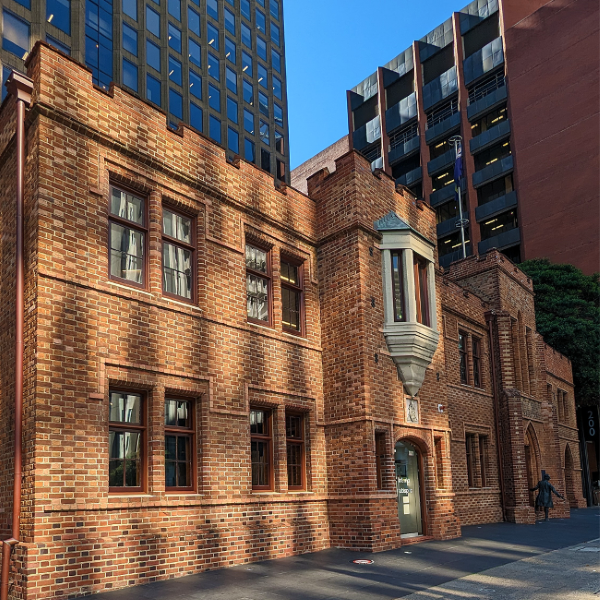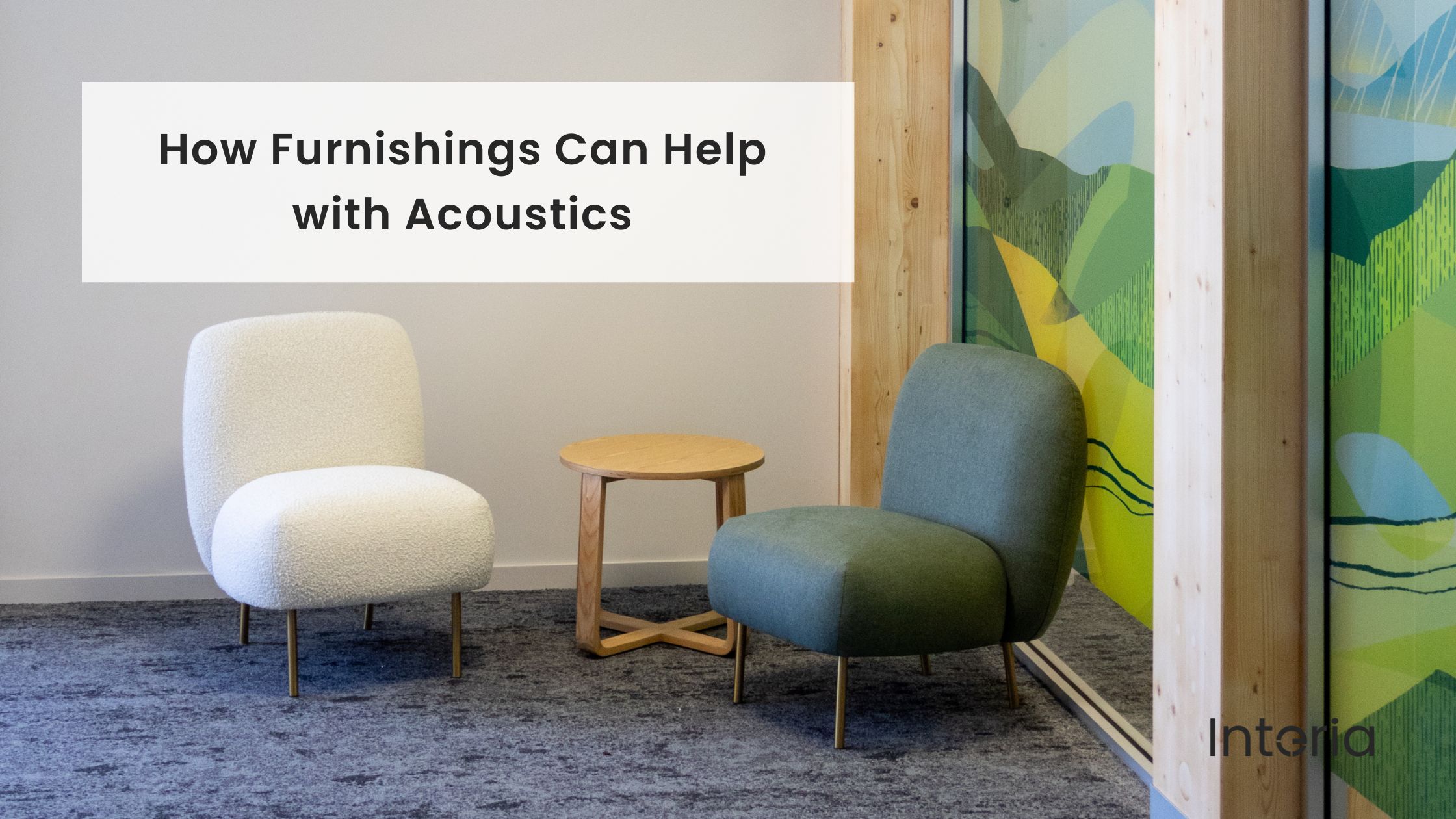
How Furnishings Can Help With Acoustics
Furnishing a room isn’t just about aesthetics. How you use materials and set up the space can considerably impact acoustics. It’s even more so for open office spaces. Rooms with large areas of hard surfaces such as concrete floors and open expanses can be much noisier since these hard surfaces reflect sound. With nothing to absorb sound, the problem is exacerbated.
Fortunately, there are many ways to counteract reflective sound. Soundproofing the space and using materials that absorb noise improve workspace acoustics. For instance, the creative use of soft furnishings can help create a more pleasant environment.
Let’s explore how using furnishings can help with the acoustics of your workspace. We’ll look at different furnishing ideas and placements to soundproof your office and create an acoustic workstation.
Understanding the Science
Sound is energy generated when things vibrate. The energy travels through air and solid materials in the form of waves. These sound waves reflect off various surfaces before they reach our ears. If uninterrupted, sound echos off the room’s hard surfaces like walls, floors and ceilings, making it difficult to hold a conversation. This “reverberation” results in the “ear fatigue” effect since we’ll have to increase our volume to overpower competing sounds.
The sound created in your workspace or coming from external sources should either be absorbed or insulated for clear and convenient communication.
Sound insulation is the process of blocking unwanted sound to avoid it propagating all over the place. Using heavy materials like concrete to build your walls stops the noise from outside, which may not be the case in pre-built offices. However, there are ways to reduce outside noise in the office environment by using furnishings like soundproof curtains, wall hangings and acoustic panels.
Similarly, sound absorption techniques manage noise within the workspace by dampening reverberation, the time required for the sound to fade away. The sound waves are absorbed by the materials in upholstered furniture, rugs, pillows or cushions, dispersing its energy.
Understanding the science behind sound and its management helps you eliminate unwanted noise in your workspace and create a tranquil environment for everyone to prosper. Read on to find out about the best noise control measures in the workplace.
Best Furnishing Ideas For Soundproofing Your Workplace
The benefits of a quiet room at work are plenty. It is excellent for increasing productivity and relaxation in the office. Here are some of the best furnishing practices to control the noise that disrupts the silence at your workplace, be it from the traffic outside or even noisy co-workers.
1. Soundproofing the Windows
As the thinnest part of the wall, windows bring in an abundance of office noise. Not all windows are built to hold out against the sheer volume of traffic, raised voices and miscellaneous noises they are bombarded with daily. Acoustic caulk can be a quick and durable fix to fill the gaps on windows to prevent the sound from pushing through. Another way to seal the gap between window panels and the frame is using weatherstripping tape.
Hanging drapes can be compelling to soundproof your space. Drapes made of thick fabric are designed with insulation in mind and also assist in reducing noise internally. Likewise, covering your windows with soundproof blankets limits the amount of noise seeping in through your windows. However, these options can’t cancel the noise coming in wholly; they are great for a level of effective sound absorption and soundproofing.
Similarly, installing thick blinds and shades is also an excellent way to prevent noise from seeping into your space from external sources.
2. Installing Acoustic Solutions to the Walls
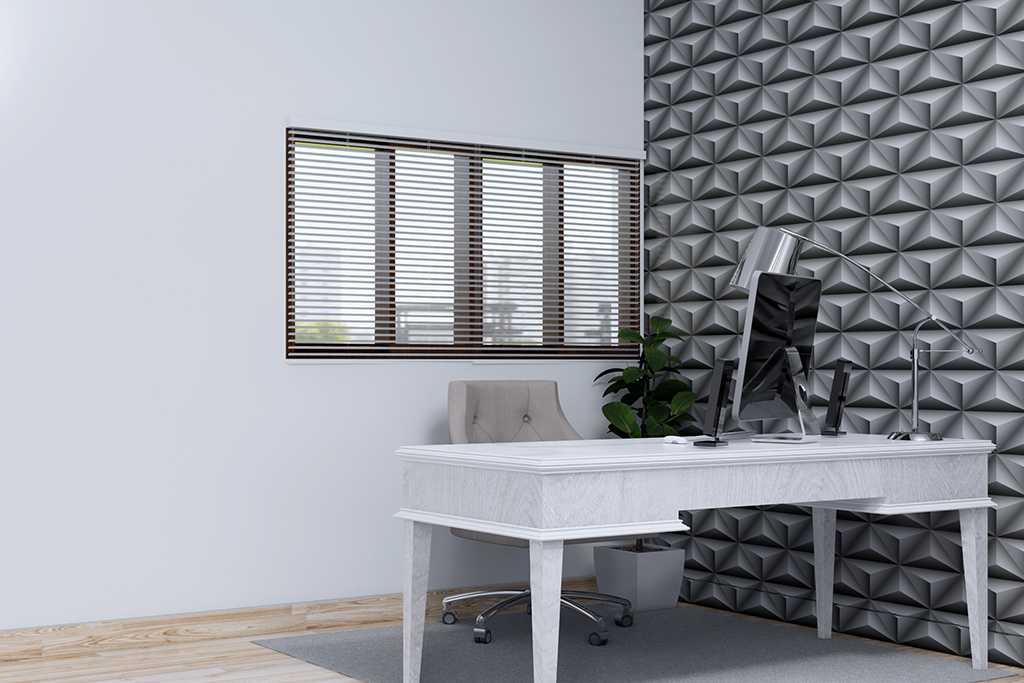
Having acoustic solutions like absorption panels, tapestries, and false curtains installed on the walls of your office is a great way to reduce echo and reverberation. They absorb sound created within the walls and block the noise coming from beyond, helping you combat noise pollution in the office.
Usually made out of foam, acoustic panels are highly effective to maintain a quiet workspace through their impressive sound absorption ability. However, people tend to be concerned about their appearance, worrying that they will be obstructive or unsightly. You need not worry, as these panels can be custom made with an artistic finish to give an aesthetic look to your office space.
Installing decorative items like pinboards can help absorb sound, as long as they are made of suitable materials. Felt-covered or cork pinboards can help, as can canvas pictures or fabric-covered frames. A quick and easy way to beautify your space while combating noise pollution at the same time is to install decorative surface products designed to reduce reflective sound.
Likewise, hanging tapestries and false curtains create a comfortable sound level in your space by preventing noise reverberations and echoes. Media rooms and large conference areas are perfect for using false curtains to control sound passing in and out. This way, you don’t interfere with other activities outside conference rooms.
3. Getting Upholstered Furniture
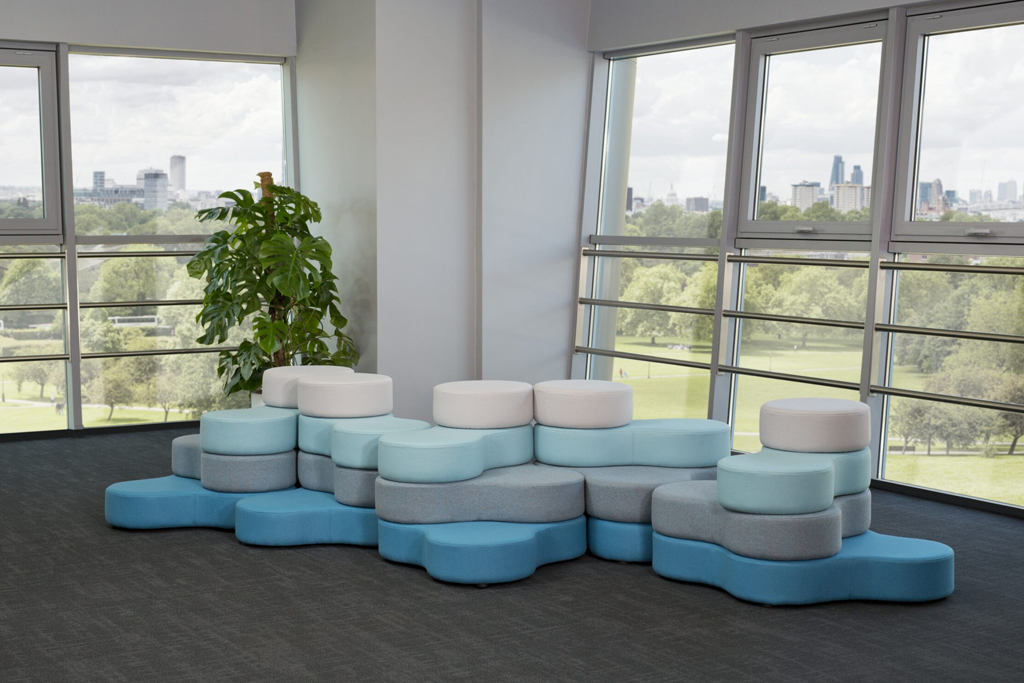
The harder the surface, the noisier the sound gets due to intensive reverberation. Replacing hard wooden furniture with soft upholstered furniture is the way to go to maintain pleasant acoustics in your workspace.
In addition to providing comfort, upholstered furnishing helps manage sound in two ways: blocking and absorption. Furniture is usually larger, making it quite effective at blocking sound waves by limiting transmission as they are challenging to vibrate. Similarly, acoustic absorption occurs in upholstered furniture as sound elements entering its soft material cannot go back through the surface or edges.
Upholstered furnishings like soft sofas and chairs are better for soundproofing than wood or plastic because hard and flat materials generally reflect sound waves.
4. Dividing The Office Area With Acoustic Dividers
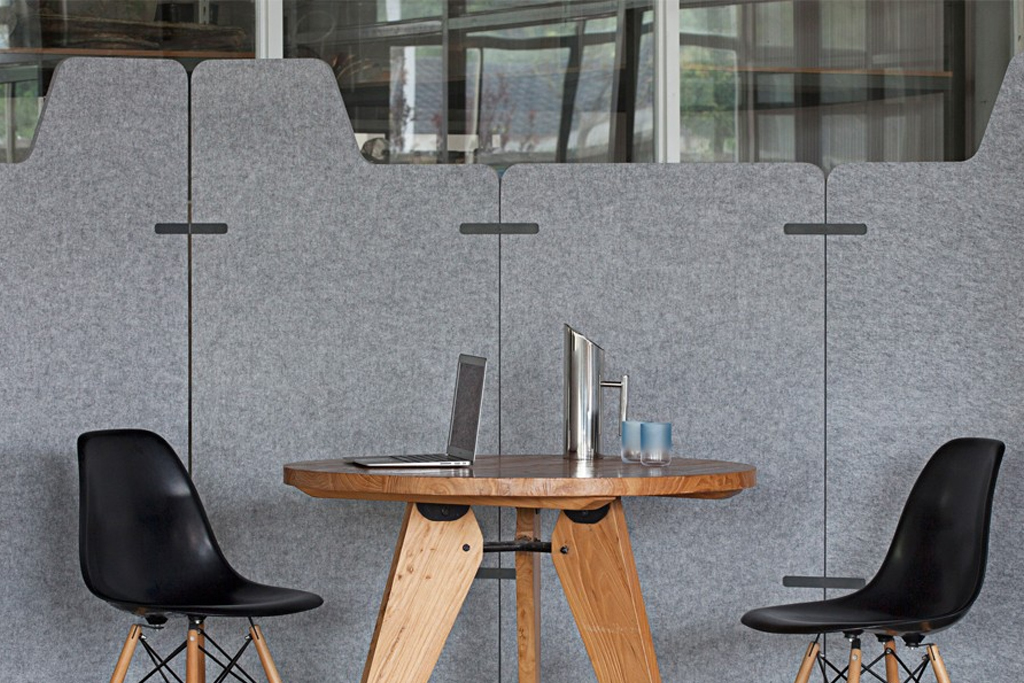
It’s essential to keep noise pollution at a minimum in offices to work without distractions. Acoustic room dividers can be cost-effective to break up large areas, offer privacy, and form barriers to reduce noise bouncing around the room. Screens can be made from acoustic materials to help reduce noise even further, thereby raising concentration levels amongst workers.
Modern open-plan workspaces have incorporated the use of chairs with high backs and pods or booths made of upholstered materials to ensure a noise-free working environment in an otherwise noisy office.
5. Insulating the Office Floor
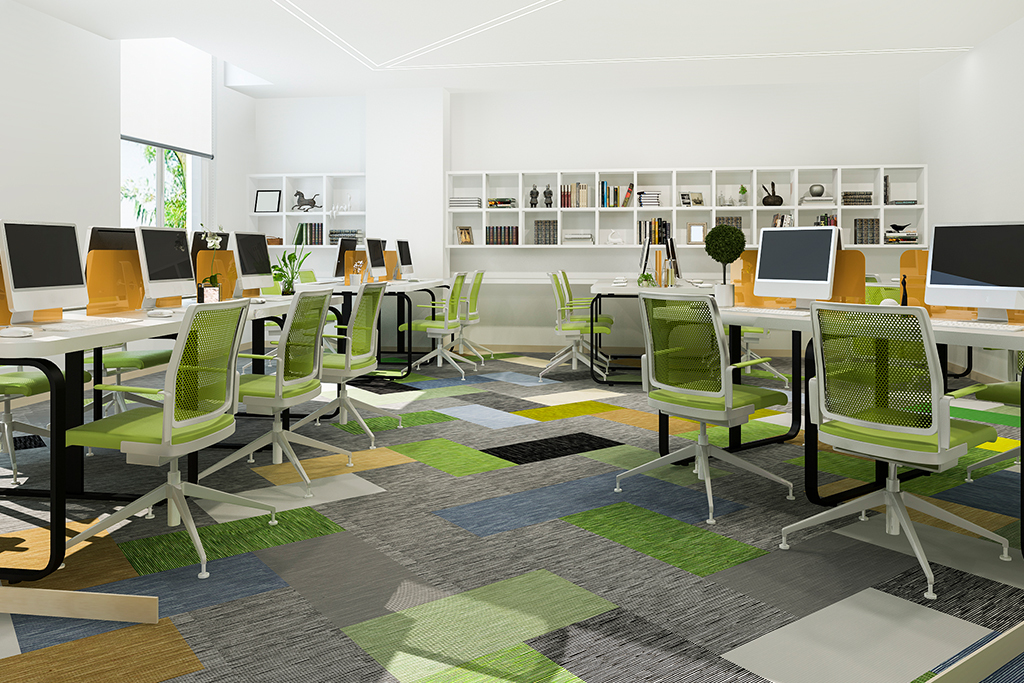
Acoustic underlays are designed to insulate the floor while remaining invisible. Perfect for high traffic areas or hallways where people walk on high heels, underlay products are positioned underneath floor coverings and absorb sound while remaining quietly unobtrusive. These are usually manufactured from rubber, and acoustic underlays are an excellent option for those who do not want the appearance of their space to be altered by sound reduction technology.
Carpets and rugs also play an essential role in soundproofing the office floor. They not only provide a gentler surface to walk on but also help absorb reflective sound. A good rug can be even more effective at absorbing reverberated noise within a space than drapes due to their larger surface area. Sound reduction pads, used together with rugs, absorb sound more effectively.
6. Building Bookcases

Ever wondered why libraries are so quiet? People don’t speak loudly in libraries, but the books themselves absorb what little whispers arise, resulting in a hushed atmosphere. Odd as it may sound, bookshelves filled with books absorb the noise due to their larger mass. Be sure to build a bookshelf high up to the ceiling and place it against the wall that receives maximum noise from outside.
Other Simpler Additions That Help With Acoustics

Minute details can change the atmosphere of an area in terms of looks and tranquillity. In addition to the furnishing ideas mentioned above, these simple add-ons can have a considerable effect on your workspace acoustics.
- Beanbag Chairs are a fun element to add to a workspace. Besides adding a modern look to your space, beanbags are filled with fluffy beans with high sound absorption quality that dampen sound.
- Throwing pillows and cushions on sofas and chairs provides an added layer of soundproofing. While helping you with your office acoustics, pillows and cushions also add to the style of your workspace.
- Plants are sometimes overlooked as a solution for reducing unwanted noise. With plenty of surface area on their leaves, which can trap waves and prevent them from escaping, it turns out that they are good at blocking sound.
- Soft furniture feet make it easier for you to slide your chair on hardwood floors without producing scraping noises from sliding the legs against the floor.
- Setting your phone and computers on silent is a good practice to help you focus and keep your colleagues away from distracting noises of notifications and ringtones.
Proper Furniture Placement For Maximum Benefit
Your furniture layout and decor in the space is just as important as getting them in the first place. Placing the upholstered furniture and other acoustic solutions at the right spot enhances their effectiveness in maintaining workplace acoustics.
When soundproofing your space, it’s crucial to think about where all the noise is coming from. If you have a shared wall with another room or sounds come through easily from elsewhere in the office, placing some furniture like bookshelves and sofa against them help reduce the impact of sound coming from other parts that don’t need much attention.
To reduce echo within a room, place upholstered furniture and other acoustic solutions in the spaces where there’s maximum sound production like common areas, meeting rooms, conference halls and so on. Putting large pieces of furniture like a sofa directly in front of a TV or speakers is a brilliant idea to absorb and trap the sound produced within the room.
How Using Furniture Can Help With Acoustics: Final Thoughts
No matter how attractive an interior looks, if it doesn’t have good acoustics, it won’t be enjoyable to spend time there. Deploying attractive and functional furnishings to improve acoustics ensures that your space is not only beautiful to look at but also a pleasure to live and work in.
At Interia, we understand the furnishing need of each space and design customised furniture to bring out the best of your workspace. To speak to our furniture specialists, book a consultation or call 1800 549 852. We are always at your service.


